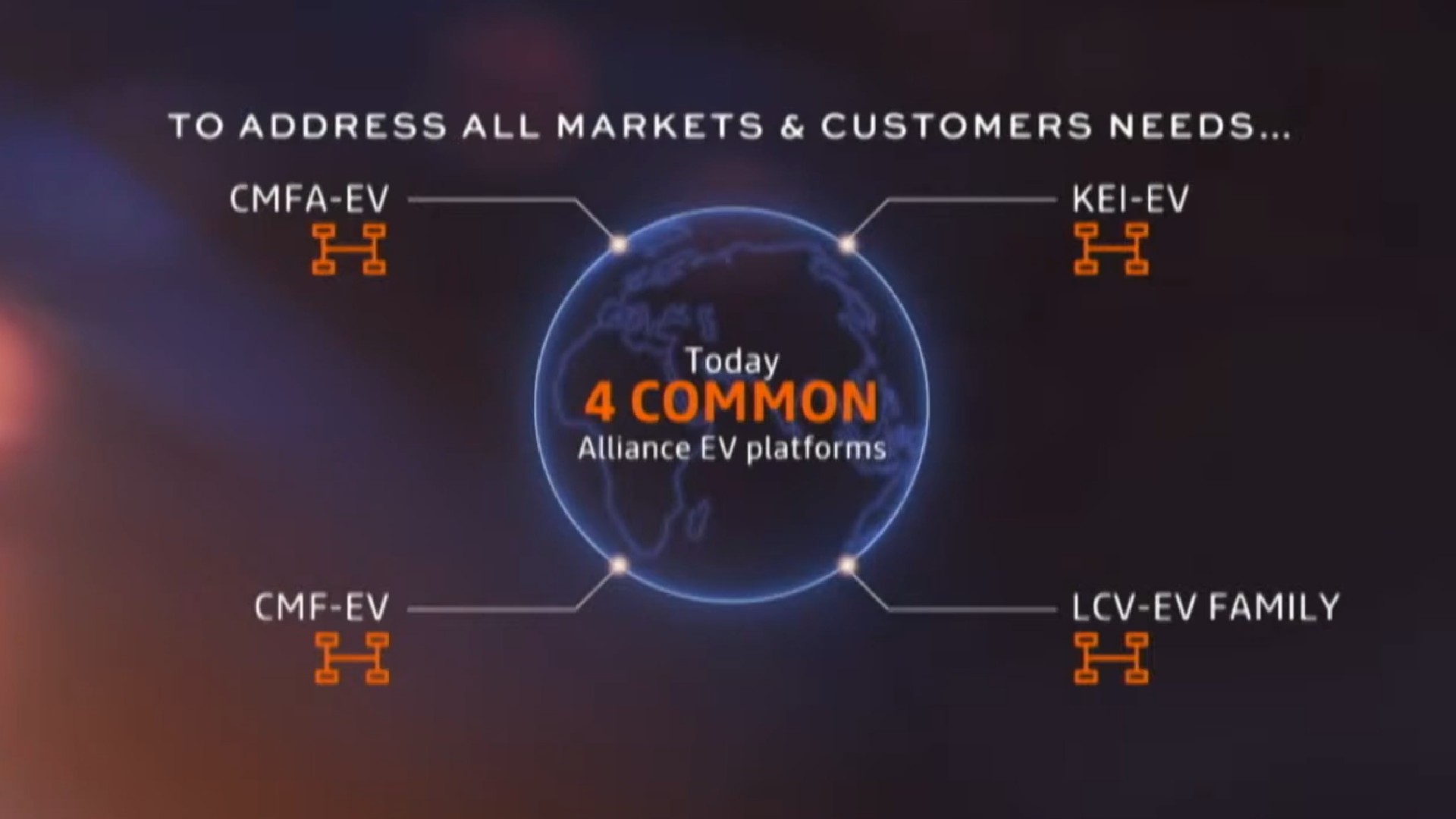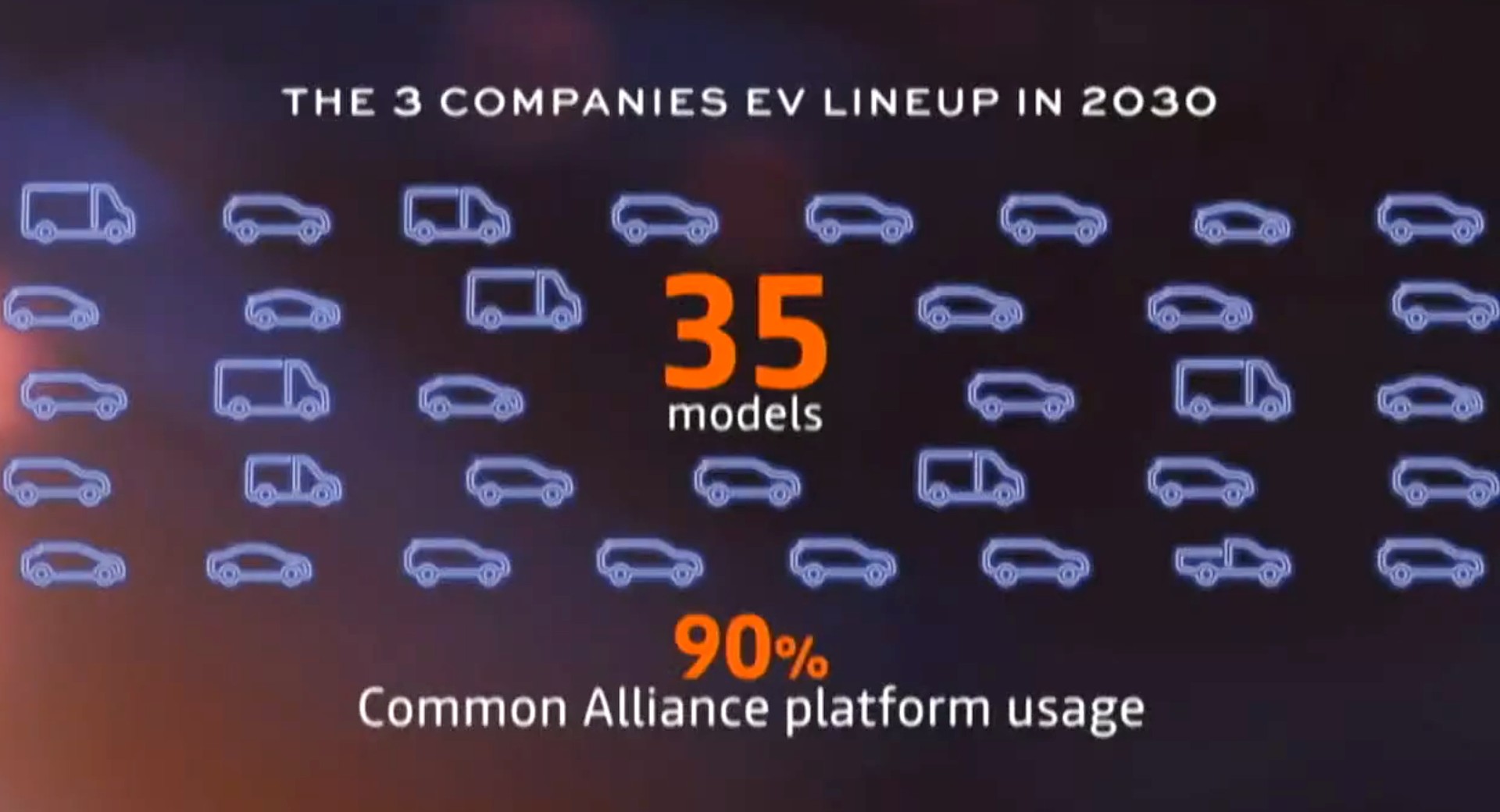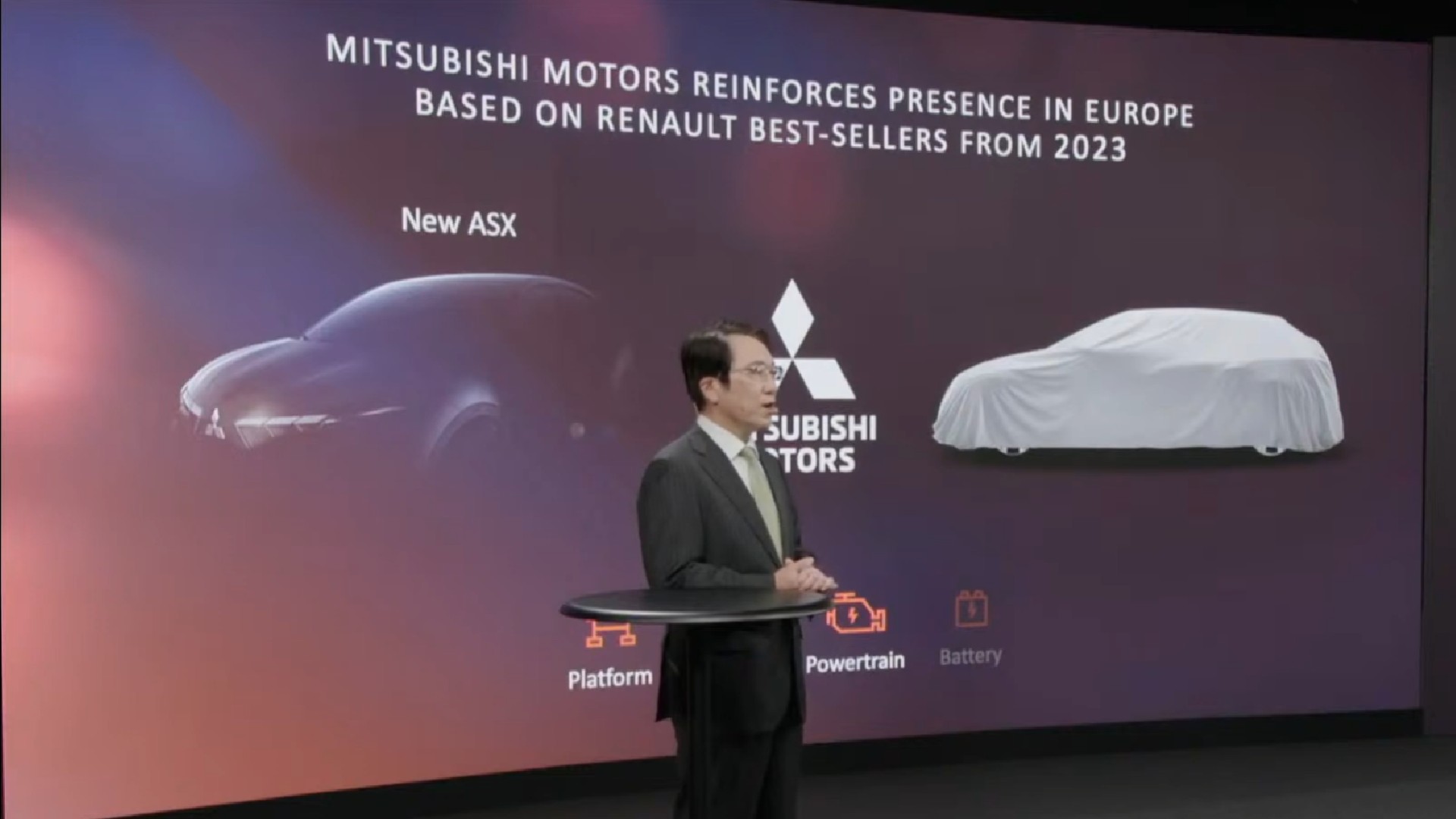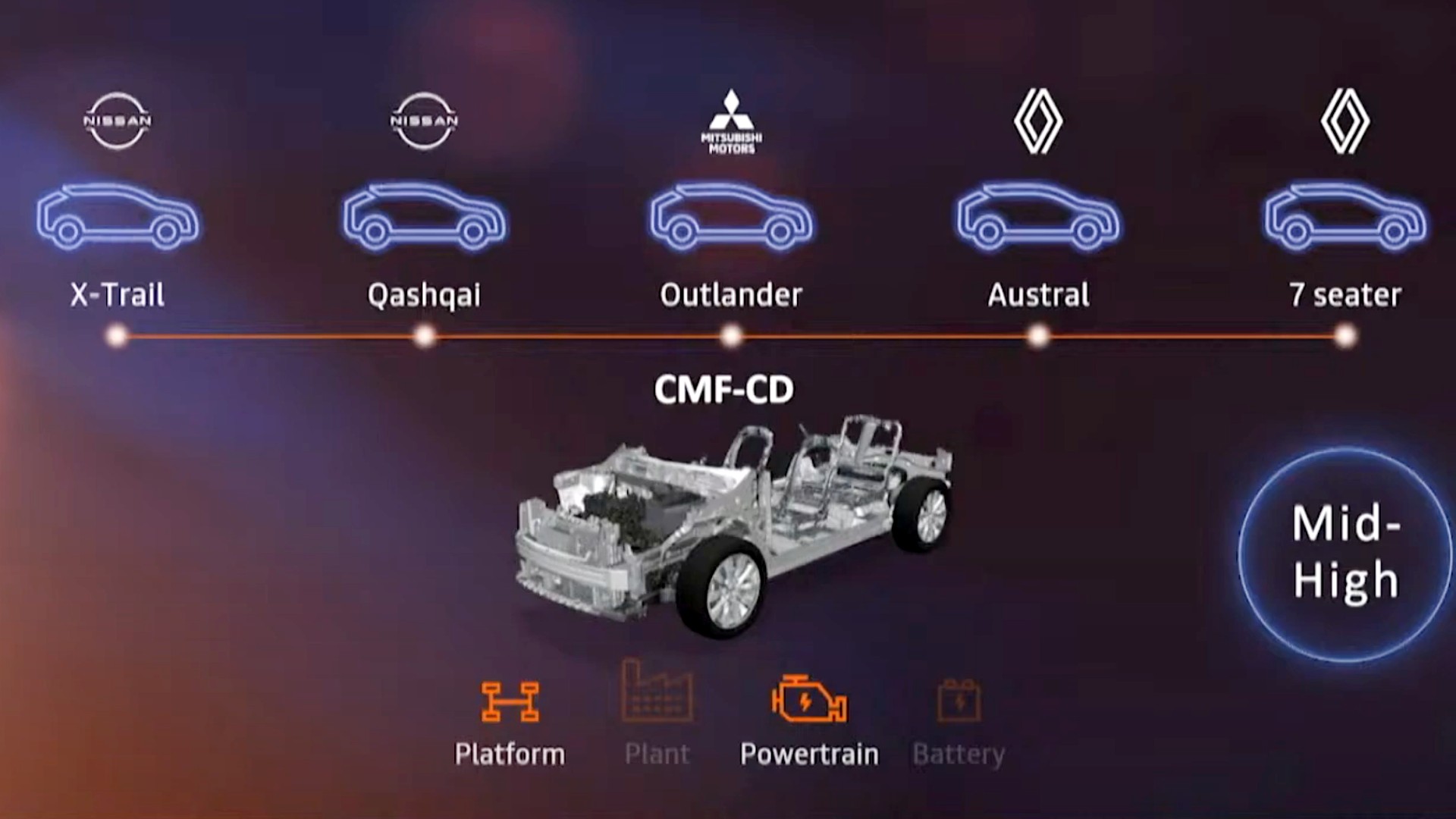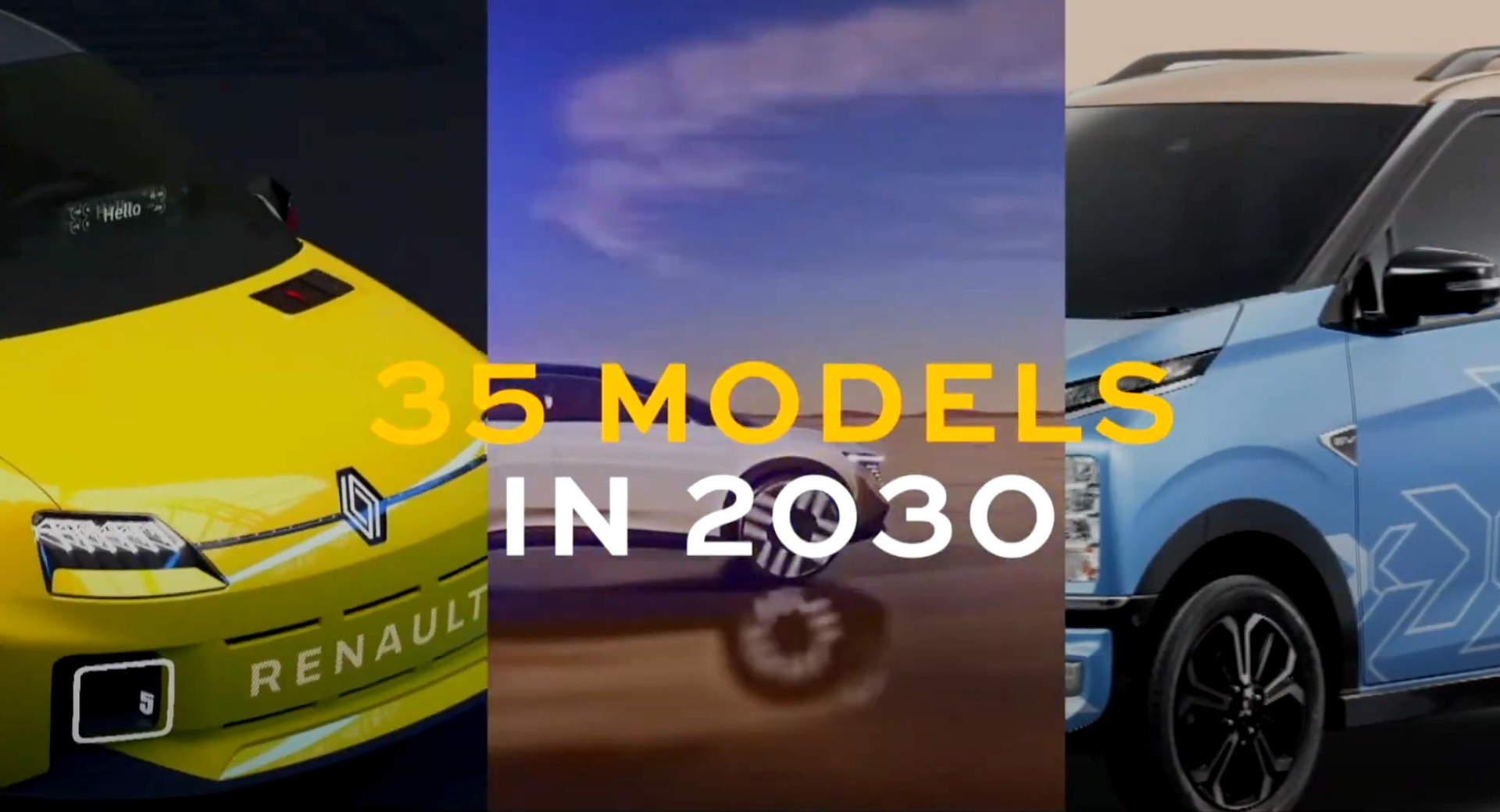The Renault-Nissan-Mitsubishi Alliance announced the 2030 roadmap in a two-hour-long presentation today, including the goal to unveil 35 new EVs across the three brands by 2030.
The upcoming electric vehicles will be mostly based on five common platforms, following a €23 billion ($25.7 billion) investment in the next five years. The Alliance says it’ll expand the use of common platforms, which is set to grow from 60% to more than 80% by 2026.
The five platforms will underpin 90% of the 35 new EV models and will include the CMF-AEV (Dacia Spring), the Kei-EV (for Kei cars), the LCV-EV (Renault Kangoo, Nissan Townstar), the CMF-BEV (Renault 5, Renault 4ever SUV and LCV, Alpine hot-hatch, Nissan Micra successor), and the CMF-EV (Nissan Ariya, Renault Megane E-Tech). The latter will serve as the base for more than 15 models by 2030 at the core of C-Segment and D-Segment EVs. The Alliance claims that their five EV platform strategy will result in the largest global offer in the industry.
See Also: Nissan Announces Renault-Engineered Electric Hatch As Micra Successor For Europe
The already confirmed EVs for each brand
Starting with Mitsubishi, the company will reinforce its presence in Europe by adding two new models in its range based on Renault’s best-sellers. These will include the new-generation Mitsubishi ASX (B-SUV), which will likely share its underpinnings with the next Renault Captur and Nissan Juke models, plus another unnamed model – both coming in 2023.
Moving on to Nissan, the Japanese carmaker will unveil 23 electrified models by 2030 but it has yet to clarify how many will be fully electric. They added that the next Micra will be a purely electric model based on the CMF-BEV platform. The electric supermini will be designed by Nissan but engineered and manufactured by Renault in Northern France as a sibling to the Renault 5. We also expect a fully-electric crossover, rumored to be the successor of the Nissan Leaf and has already been teased in the past.
Last but not least, Renault has already previewed its future electric range in June 2021 so there are no new model announcements on this front. We already know that the Renault 5 supermini will start production before the end of 2022, with the Renault 4ever SUV and its LCV sibling following in 2024. Setting aside the EVs, Renault will launch a new seven-seater SUV based on the CMF-D architecture to sit above the upcoming Austral five-seater.
See Also: Renault Teases Kadjar-Replacing Austral And Its Electrified Engine Lineup
Nissan Responsible For Solid-State Batteries, Renault For Connectivity
The 35 new EVs will need batteries and for that, the Alliance is planning to reinforce a common battery strategy to secure a global production capacity of 220 GWh by 2030. Following last year’s announcement for Envision AESC and Verkor as new battery suppliers for the Renault Group, the goal of the Alliance is to reduce battery costs by 50% in 2026, and by 65% by 2028, as key to making EVs more affordable. The next step will be the all-solid-state battery technology (ASSB) with Nissan being in charge of its development. The new battery technology will have double the energy density compared to the current lithium-ion batteries while reducing charging time to one-third. The first solid-state batteries will reach the market by mid-2028.
The Alliance is also focused on connectivity with 25 million vehicles connected to the Alliance Cloud by 2026, a significant increase compared to the 3 million connected vehicles today. Renault will be leading the way for the Alliance to develop a “common centralized electrical and electronic architecture” with the first “full software-defined vehicle” coming by 2025. Furthermore, the Alliance will be “the first mass-market OEM to introduce the Google ecosystem in its cars” offering over-the-air updates throughout the models’ lifecycle. In terms of ADAS, 45 Alliance models will be equipped with autonomous driving systems by 2026, with more than 10 million vehicles on the road.
The presentation comes a year and a half after Renault-Nissan-Mitsubishi announced its new business model to support the competitiveness of each brand and increase profitability. Jean-Dominique Senard, chairman of the Alliance, said: “The three member-companies have defined a common roadmap towards 2030, sharing investments in future electrification and connectivity projects.” while confirming the goal for the Alliance to become carbon neutral by 2050.





